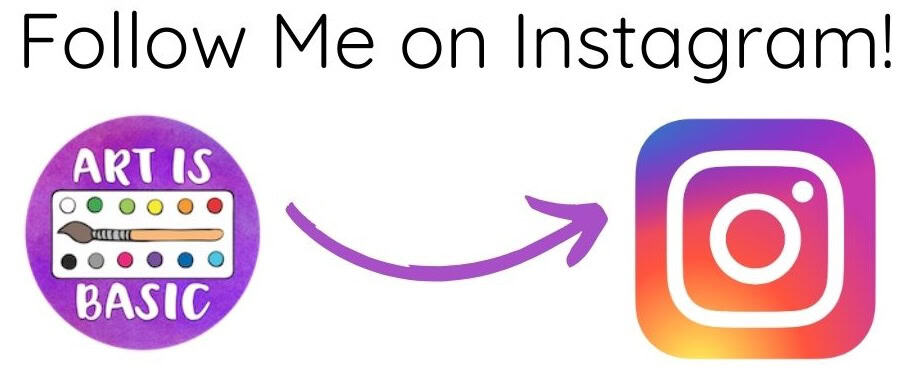
Wow, I’ve been so busy. Aren’t we all though, right? But really, this is one of the most busy times of year. Parent-teacher conferences this week and March is when the yearbook needs to be finished up. I also put up an art show at the public library (which I will post about later) and we have been working like crazy on our mural in the hallway! The mural is almost done and I am just waiting until everything has the final touches before I post pictures of it. In between all this, I still have art classes to teach and at night I have kids to take care of. I try to fit in a little bit of blogging here and there, because it really is a fun hobby.. something I like to do for myself. When summer comes, I’m sure I will have a back-log of projects to share with you.
This lesson was on types of shapes and color mixing for kindergartners. First we read the book When a Line Bends . . . A Shape Begins and we talked about the difference between organic (freeform) shapes and geometric (circles, squares, triangles, etc.) shapes. Then, the children received their white sheet of paper and they used a pencil to draw organic and geometric shapes. They used a black permanent marker to trace over their shapes.

Next, I demonstrated how layering colors on top of each other would change how the colors looked. For example, coloring yellow and blue together would make a green. We used water-soluble crayons, paintbrushes and water to blend our colors. I had a few types of water-soluble crayons. First, Crayola Ultra Clean Washable Crayons are cheap and will blend with water. Thanks to the art teacher who mentioned this product on the Art Teacher Facebook group. A bit pricier version of these water-soluble crayons are the Caran d’Ache Neocolors
. They blend soooooo nicely. The quality is amazing. A trick to stretch a box of these further is to simply break the long crayon into a couple of pieces and have one of each color piece sitting in between kids so that they can share the colors. I actually just have a box of water-soluble crayons all mixed together portioned in baggies to distribute… the Neocolors, Crayolas and Reeves Water Soluble Wax Pastels
(okay quality, similar to the Crayolas).

So, the kids explore color mixing and just see what happens when they mix different colors. Brown is also a fun color to make! I really love the variety of colors and shapes the kids made.

The last step was to go over the shapes with black paint using a thin paint brush. This really makes the shapes “pop”.





Discover more from Art is Basic | Elementary Art Ideas
Subscribe to get the latest posts sent to your email.




























Just love your blog. Great art activities. I am also an art teacher from Melbourne Australia. I have been teaching for years but this is my first time in the art room. I wondered how you assess your students work? Do they complete assessments on their own pieces?
Hi! Thanks for your compliments. I must admit I don’t do as much self assessment as I should. I don’t have to give grades but I have to write a paragraph of comments on their report card. I highlight some of the projects and talk about their understanding and use of concepts, creativity, ideas, work habits and craftsmanship. I have only 160ish students but it still takes A LONG TIME to write reports!